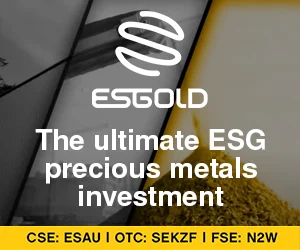In the vast universe of board games, economic games often stand out as a unique genre that combines strategy, resource management, and player interaction. However, for many newcomers, the complexities of these games can be daunting. Enter Lunar Rush, a game that seeks to bridge the gap between seasoned players and those just dipping their toes into the world of economic mechanics. While capitalism may be a flawed system in reality, it provides a rich backdrop for engaging gameplay, and Lunar Rush captures this essence beautifully.
A Fresh Approach to Economic Gaming
At its core, Lunar Rush is designed to be accessible to beginners while still offering enough depth to satisfy veteran players. The game revolves around players bidding for shipping lanes to transport goods to and from the moon, all while building their own moon bases through worker placement mechanics. This dual-layered approach allows players to engage in both competitive bidding and strategic resource management, making it a well-rounded experience.
Smooth Onboarding for New Players
One of the standout features of Lunar Rush is its beginner cards, which serve as an exceptional onboarding tool. These cards provide specific point rewards for achieving certain goals during the game, allowing newcomers to grasp the mechanics without feeling overwhelmed. This thoughtful design ensures that even players unfamiliar with economic games can quickly get up to speed and enjoy the experience alongside more experienced friends.
Engaging Mechanics
The gameplay of Lunar Rush is multifaceted, incorporating various mechanics that keep players engaged. The secret auction for shipping lanes adds an element of suspense and strategy, as players must decide how much to bid for the opportunity to transport their goods. The tactile experience of loading and pushing around cardboard tray ships adds a delightful physicality to the game, enhancing the overall enjoyment.
Once players have secured their shipping lanes, they can focus on building their moon bases through worker placement. This aspect of the game allows for personal strategy development, as players must decide how to allocate their resources effectively. The simplified market system for selling goods back on Earth adds another layer of strategy, as players must navigate fluctuating prices while trying to maximize their profits.
Modular Depth for Experienced Players
While Lunar Rush excels at onboarding new players, it also offers enough complexity to keep seasoned gamers intrigued. The introduction of gold modules—powerful extensions to players’ moon bases—adds a strategic layer that encourages players to think critically about their builds. The reverse bidding mechanic for these modules creates a dynamic environment where players must adapt their strategies based on the available options.
Additionally, the moon wonders mini-expansion introduces further variability to the game. By drafting these wonders after the gold modules, players can create unique combinations that enhance their gameplay experience. This modularity ensures that no two games of Lunar Rush are ever the same, keeping the replay value high.
Areas for Improvement
Despite its many strengths, Lunar Rush is not without its flaws. The game received a score of 75, reflecting some missteps in production and design. For instance, the gold module cards, while powerful, are printed with a dark foil that makes them difficult to read from a distance. This issue is compounded by the tendency of foiled cards to warp, which can hinder their functionality as worker placement spots.
The rulebook also presents challenges, with a somewhat clumsy layout that can confuse players. The inclusion of flavor text and scientific essays in the rulebook, while interesting, detracts from the clarity and accessibility of the instructions. A more streamlined rulebook would enhance the overall experience, allowing players to focus on gameplay rather than deciphering complex rules.
Thematic Consistency
The hard sci-fi theme of Lunar Rush adds an intriguing backdrop to the game, but it also presents some challenges. The artwork on the base upgrade cards tends to be somewhat generic, failing to convey their unique functions effectively. While thematic consistency is important, it should not come at the expense of clarity and usability.
Conclusion: A Promising Entry Point
In summary, Lunar Rush is a commendable effort to introduce new players to the world of economic board games. Its innovative onboarding mechanics, engaging gameplay, and modular depth make it a strong contender in the genre. While there are areas for improvement, particularly in production quality and rulebook clarity, the game’s strengths far outweigh its weaknesses.
For those looking to explore economic games without feeling overwhelmed, Lunar Rush serves as an excellent gateway. It invites players to engage in strategic bidding, resource management, and creative building, all while providing a fun and accessible experience. As the board gaming community continues to grow, Lunar Rush stands out as a title that can bridge the gap between newcomers and seasoned players, making it a worthy addition to any game night.




